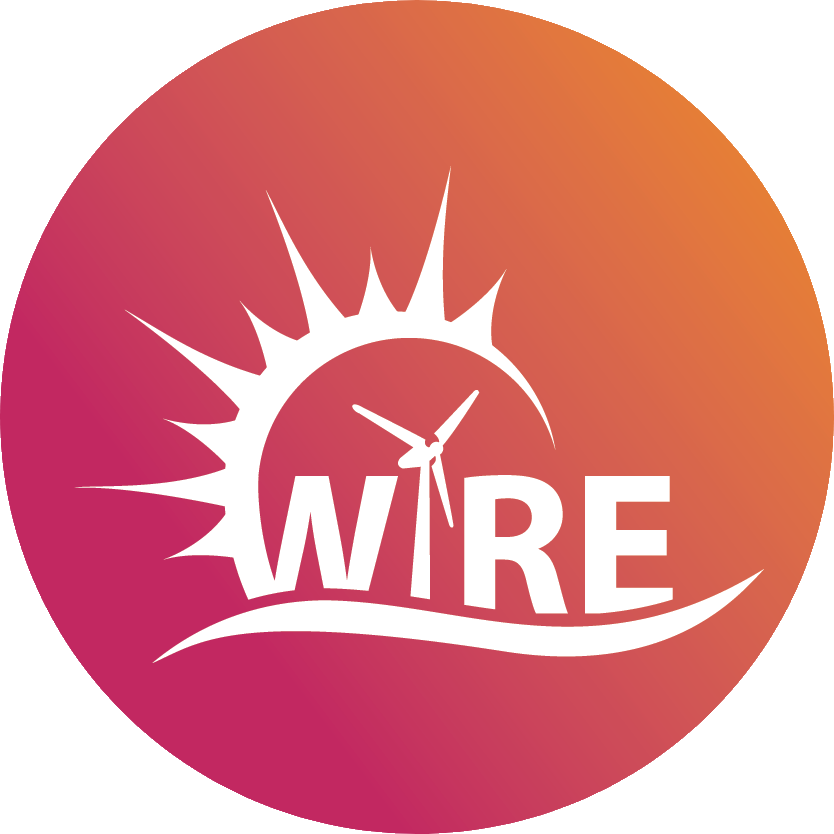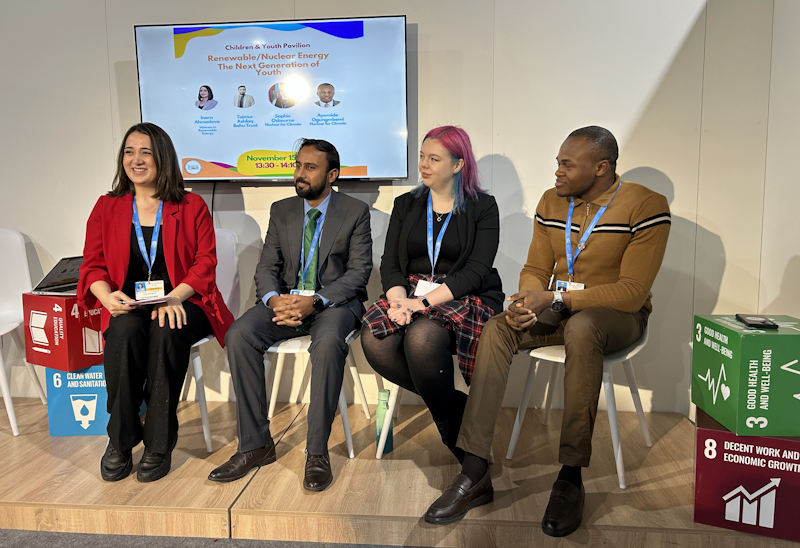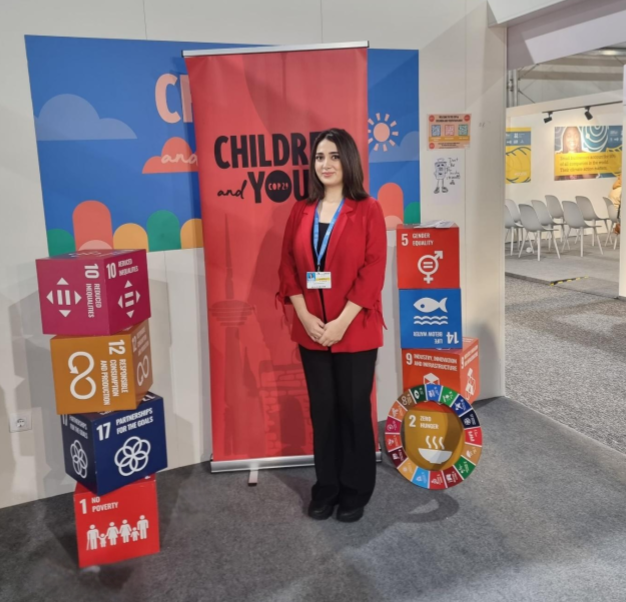COP29: Youth Lead the Charge for a Resilient Energy Future
Moderator Inara Ahmadova, WiRE Azerbaijan Chapter Leader, enjoying a moment with the panelists
BAKU, AZERBAIJAN — On November 15, 2024, the Children & Youth Pavilion at COP29 became a hub of forward-thinking dialogue as leaders from the energy sector and young advocates gathered for a panel discussion titled "Renewable/Nuclear Energy - The Next Generation of Youth." Co-hosted by Nuclear 4 Climate and Women in Renewable Energy (WiRE), the event underscored the pivotal role of young people in accelerating the global clean energy transition.
The panel was moderated by Inara Ahmadova, WiRE's Azerbaijan Chapter Co-Leader, who deftly guided an insightful exchange between three distinguished panelists: Taimur Ashfaq, a Youth Delegate and Production Engineer from Pakistan; Sophie Osbourne, a Physics PhD student and Policy Advisor for Nuclear for Climate; and Ayomide Ogungmbemi, a PhD in Energy Systems and fellow member of Nuclear for Climate.
The discussion went beyond the conventional. The speakers highlighted that today's youth are uniquely equipped to tackle complex energy challenges, thanks to the information age. Unlike previous generations, they have unprecedented access to knowledge and are digital natives, which positions them to drive change through innovation, advocacy, and education.
Inara Ahmadova, WiRE Azerbaijan Chapter Co-Lead
Youth as Drivers of Change
The core of the conversation centered on the belief that youth are not just passive recipients of a changing world, but active participants in shaping a sustainable energy future. The panelists explored several key areas where young people can make a significant impact.
Advocacy and Policy
Young people are increasingly leveraging social media and direct engagement to influence political decisions. Their public awareness campaigns are raising the stakes for policymakers, pushing them to adopt more ambitious climate targets.
Innovation and Entrepreneurship
The discussion also focused on the youth’s ability to use emerging technologies like AI, big data, and blockchain to create new solutions for clean energy. This technological literacy is a powerful tool for launching startups that can disrupt traditional energy models.
Education and Skill Development
The panel stressed the importance of young people pursuing education in science and engineering to become the future workforce of the energy sector. This includes understanding and embracing technologies that were once considered niche, such as small modular reactors (SMRs), which were highlighted as a key component of a low-carbon future.
Joanna Osawe, WiRE President & CEO and event organizer Hugo Bernat of Nuclear for Climate
A Broader Perspective on Nuclear Energy
A notable theme was the urgent need to integrate nuclear energy more fully into the clean energy conversation. Panelists argued that nuclear power, with its ability to provide consistent, carbon-free energy, is a critical partner to intermittent renewables like wind and solar. This discussion aimed to debunk public misconceptions and showcase modern technologies like SMRs as a safe and efficient way to reduce carbon emissions.
The conversation also touched on the importance of community and global cooperation, showing how youth can drive change at both local and international levels. Through international collaboration and networking, young people can build a global movement that transcends borders.
Fostering Creativity and Collaboration: "Energies of Change" Art Contest
Complementing the panel discussion, WiRE and Nuclear 4 Climate also collaborated on an international art contest titled "Energies of Change: Visions for a Sustainable Future in YOUR Country." This initiative invited young people under 37 to submit artwork depicting a clean energy future.
The contest provided a unique platform for artists and visionaries to express their ideas. The winner received an extraordinary opportunity: a blue zone badge and a $1,000 grant to attend COP29, with their artwork showcased at the event. This creative component not only attracted new voices to the climate dialogue but also visually captured the aspirations of the next generation.
A World of Possibilities
The panel ended on a hopeful note, highlighting the great possibilities seen through the eyes of the next generation. Despite political and economic challenges, young people are embracing the task of managing new technologies and promoting energy fairness. They are working together, both online and offline, with a strong belief in a cleaner, greener future. The event showed that with the right tools and partnerships, the next generation can lead a strong and fair energy future. The main message was hope: as one attendee said, "Through the eyes of the next generation, the world is full of great possibilities!" This idea echoed throughout, reminding us that the future of energy depends on the people leading it, not just the technology.
Learn more about Nuclear for Climate
Written by:
Andrew Osawe,
Director of Operations,
Women in Renewable Energy (WiRE)



